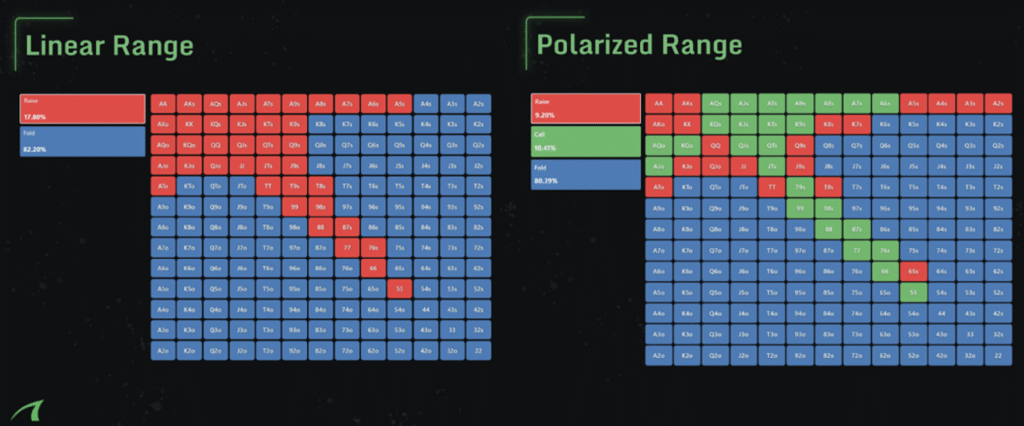Event poker retains evolving, and so ought to your technique. That’s why Jonathan Little and the group have rebuilt the flagship MTT course from the bottom as much as create Event Masterclass 2.0.
The brand new course is designed to assist critical gamers grasp each stage of event play.
From superior postflop decision-making to ICM and ultimate desk technique, short-stack changes, and the psychological sport, the brand new Masterclass delivers a structured path to long-term success in immediately’s aggressive MTT panorama.

Over the subsequent few weeks, we’ll be supplying you with unique sneak peeks into the important thing sections of the TMC 2.0. We are going to begin the place all of it begins, overlaying preflop foundations.
In case you’ve ever watched elite event gamers undergo powerful preflop spots with whole confidence, it’s not luck however relatively a structured method they’re taking.
They’ve constructed their sport on rock-solid fundamentals that make each postflop choice simpler, extra worthwhile, and extra predictable.
Jonathan Little opens Event Masterclass 2.0 by overlaying MTT preflop rules, one of the crucial important but usually misunderstood sections. Whether or not you’re a seasoned grinder or nonetheless constructing your first event resume, mastering preflop play is what separates gamers who “guess” from those that know.
Lesson 1: The Significance of Place & Stack Depth

If poker had a golden rule, mastering positional play would possibly simply be it. On this first video, Jonathan explains why your seat on the desk shapes a lot of your decision-making, and most significantly, the right way to regulate to completely different stack sizes.
If you’re in place, you get extra info, extra management over pot measurement, and a higher skill to appreciate your fairness. If you’re out of place, each pot turns into a battle uphill.
At deep stacks (80bb+), he emphasizes enjoying cautiously from early place. If you open underneath the gun, you’ll usually need to play giant pots out of place in opposition to a number of callers. In these spots, speculative fingers like suited connectors or small pairs lose a whole lot of worth since you usually received’t understand your fairness. As an alternative, concentrate on robust, related, and high-card fingers that carry out effectively throughout many runouts.
In distinction, as you progress later in place, akin to cutoff and button, your ranges ought to widen dramatically. The deeper stacked you might be, the extra leverage your place provides you. You possibly can open suited aces, suited connectors, and one-gappers profitably as a result of performing final permits you to management the pot and extract worth whenever you hit.
At medium stacks (30–50bb), place nonetheless issues, however the dynamics shift a bit. Shorter stacks create smaller postflop SPRs (stack-to-pot ratios), that means fingers like offsuit broadways and small pairs lose a few of their implied odds worth. On the button, you’ll be able to nonetheless open these liberally, however in early place, trimming your vary retains you out of tough postflop spots.
As soon as stacks fall under 20bb, place issues the least, and the sport turns into extra math-driven. Push-fold selections dominate, and you’ll’t depend on postflop maneuvering. Even right here, Jonathan factors out that gamers in later positions retain an edge as a result of they will see who’s but to behave and steal extra successfully.
“The deeper the stacks, the extra place issues. If you’re brief, place shrinks in significance — however it by no means disappears fully.” – Jonathan Little
Lesson 2: Understanding Totally different Preflop Ranges

Within the second preflop lesson, Jonathan takes gamers deeper into how professionals take into consideration ranges. Phrases like “linear” or “polarized” aren’t simply jargon – they describe the structure of your preflop technique.
Earlier than you’ll be able to play effectively preflop, it’s essential to be taught to acknowledge the form of your and your opponent’s vary.
Right here’s how Jonathan defines the 5 most necessary vary sorts and when to make use of them:
- Linear Ranges – These are made up of your strongest fingers in descending order. If you 3-bet linearly, you’re constructing a variety of pure worth fingers like AQ+, TT+, and suited broadways. Jonathan explains that linear ranges are preferrred whenever you count on your opponent to name 3-bets usually, because you wish to push your fairness edge with fingers that carry out effectively postflop.
- Polarized Ranges – These mix your perfect fingers (AA, KK, AKs) with fingers which are only a bit too weak to name (like A5s or K9s). Polarization is only when your opponent’s opening vary is huge and also you count on folds steadily. You’re balancing premium worth fingers with well-chosen bluffs that block robust holdings.
- Capped Ranges – These are passive ranges that lack the strongest fingers. For instance, if the massive blind simply calls in opposition to a small blind open, their vary is capped since they don’t have AA or KK practically as usually. Recognizing a capped opponent permits you to apply stress postflop with aggression and larger sizings.
- Uncapped Ranges – The other of capped since these ranges can embrace the nuts. Any time you’re taking an aggressive motion (open-raise, 3-bet, or 4-bet), your vary stays uncapped, and opponents should tread rigorously.
- Condensed Ranges – These include largely medium-strength fingers with out the weakest holdings however not premiums. A typical instance is a button calling vary versus an early-position open, stuffed with fingers like AJs, 99, and KQs.
Jonathan offers sensible examples all through:
- If you 3-bet from the small blind in opposition to a button open, your vary ought to be polarized with robust fingers and bluffs.
- If you 3-bet from the massive blind versus an early-position elevate, go extra linear because you’ll usually get known as, so concentrate on fingers with strong fairness realization.
He stresses that studying to establish these shapes doesn’t simply make it easier to construct higher ranges, it additionally helps you learn opponents in actual time. When a good participant flats your UTG open from the button, their vary is probably going condensed. When an aggressive reg 3-bets from the cutoff, count on polarization. These psychological fashions allow you to anticipate their subsequent transfer earlier than the flop even comes.
“Understanding ranges is like talking the language of poker. When you’re fluent, each choice turns into clearer.” – Jonathan Little
Lesson 3: The Final Information to Preflop Wager Sizing

On this superior lesson, Jonathan reveals precisely how professionals measurement their raises, 3-bets, and even shoves throughout completely different efficient stack depths.
Jonathan lays out a structured sizing framework based mostly on stack depth and place, serving to gamers keep away from one of the crucial widespread leaks with inconsistent sizing. Elevating smaller with weak fingers or bigger with robust ones might really feel intuitive, however it exposes you to exploitation by observant opponents.
As an alternative, stick with a transparent system:
- 80bb+ – Open to round 2.5bb. When going through a elevate, 3-bet to about 3.5x in place and 4.5x out of place. Dealing with a 3-bet, re-raise to 2.5x in place or 3x out of place. Deep stacks imply bigger SPRs, so postflop talent issues most.
- 60–80bb – Trim barely: open to 2.3bb, 3-bet to three–3.2x in place and 4.2x out of place. Your fold fairness stays excessive, however you scale back threat in opposition to 4-bets.
- 30–50bb – The center zone the place 3-bet shoves start to seem. Jonathan advises mixing in non-all-in 3-bets with robust worth and polar bluffs whereas staying conscious of shorter stacks behind you.
- 20–25bb – That is the place the technique pivots. You’ll usually see polarized 3-bet shoves and smaller open sizes round 2bb. Jonathan explains that at this depth, you’ll be able to’t 3-bet small and fold since your fold fairness and stack preservation depend upon decisive motion.
- 10–19bb – Most 3-bets change into all-ins, however you’ll be able to nonetheless be calling with numerous fingers, particularly from the button or large blind, when pot odds and place justify it.
He additionally highlights a standard mistake: not adjusting in opposition to limpers. Towards a number of limpers, Jonathan recommends utilizing a pot-sized elevate, which is roughly thrice the final limp plus one large blind for every limper. This sizing denies fairness to speculative fingers and punishes passive gamers who limp too huge.
For instance, if two gamers limp and blinds are 500/1000, a pot-sized elevate can be round 6.5bb, which is sufficiently big to isolate whereas maintaining your vary constant.
This method creates a data-driven, repeatable system you’ll be able to apply instantly, regardless of the desk or stack configuration.
Bringing It All Collectively
These first three preflop classes lay the inspiration for what’s to return in Event Masterclass 2.0. They bridge idea and apply, exhibiting not solely what to do but in addition why it really works.
That is simply step one in your preflop journey, and by the point you’ve accomplished the complete Preflop part, you’ll perceive:
- The way to construct and acknowledge completely different vary constructions
- How stack depth impacts each elevate, name, and shove choice
- Why constant sizing and positional consciousness drive long-term profitability
- The way to construct the right technique in opposition to completely different opponents and ranging stack sizes


